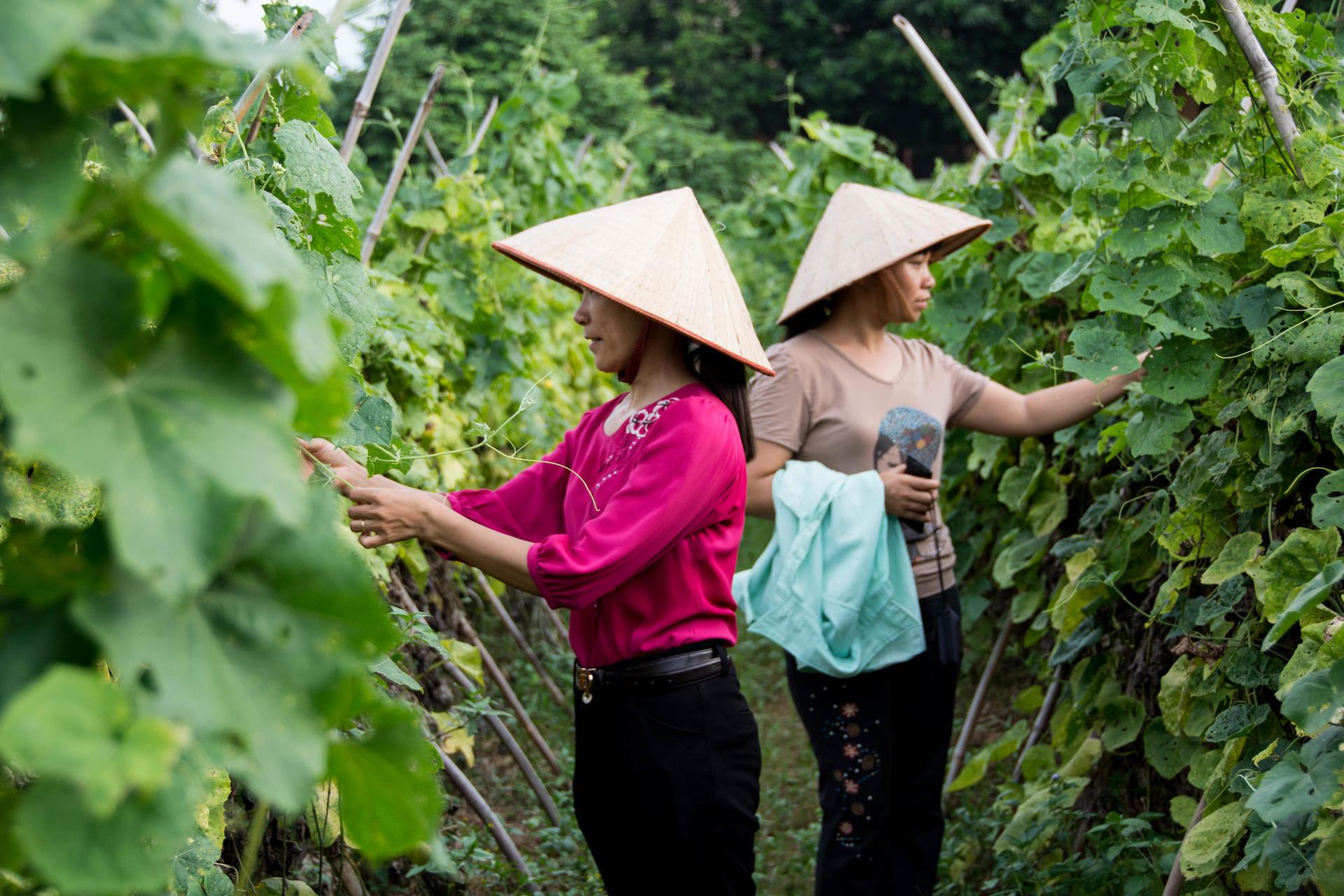Blog "How can we measure if our actions are increasing gender equality?”: Insights from a scoping review into gender-responsive monitoring approaches for agrifood stakeholders

A recent rapid scoping review identified a lack of clear and accessible guidance to support agrifood stakeholders in measuring their contributions to women’s empowerment and gender equality. In response, we have developed resources to support more effective gender-responsive monitoring, including a curated shortlist of turnkey resources and the Gender Equality in Agrifood Systems: Indicator List (GEASIL).
By:
Catalina Mora, Sustainable Agriculture Network (SAN)
Miranda Morgan and Marlène Elias, The Alliance of Bioversity International and CIAT
Agriculture and the processing of and trade in food products are notoriously riddled with inequality. Rural women as well as marginalized groups at the base of agrifood supply chains typically experience poor terms of trade and are embedded in highly unequal relationships with other actors along the chain.
As a result, agrifood companies and Voluntary Sustainability Systems (VSS) are increasingly striving to address gender inequalities in value chains. But they face many challenges in this work. One of these is related to monitoring; that is, being able to meaningfully assess and understand if and how their initiatives contribute towards women’s empowerment and gender equality to guide decision-making.
A recent Scoping Study has shown that several VSS in the agrifood sector identify the development of effective and meaningful gender-responsive monitoring approaches as a key learning priority. In response, the Sustainable Agriculture Network (SAN) and The Alliance of Bioversity International and CIAT partnered on a rapid scoping review to identify and map available monitoring approaches that could inform the strategies of agrifood sector actors in this area. This involved reviewing over 50 resources produced by a wide range of organizations and sectors to assess change in gender equality.
What we found was a proliferation of frameworks, approaches and tools with some overlap but no universally-agreed approach. Although the proliferation of approaches can be useful to address the concerns of different actors across contexts, it can make it particularly challenging for agrifood stakeholders that are trying to develop their monitoring systems to select those that best suit their needs.
We also found that many resources provide only superficial gender-related measurement approaches and indicators that help to measure whether programs ‘reach’ or ‘benefit’ individual women beneficiaries. But for those initiatives that intend to go further, to ‘empower’ women or even ‘transform’ gender inequity, additional measurement strategies are required (check out this video for an introduction to the Reach-Benefit-Empower-Transform (RBET) framework).
The review also identified the lack of clear and accessible guidance targeted to key agrifood stakeholders seeking to support gender equality outcomes.
To address this gap, we developed a succinct and focused brief that aims to:
-
Provide an overview of gender-responsive monitoring, including suggested steps and elements for those seeking to develop or improve their monitoring approaches;
-
Offer a curated shortlist of turnkey resources appropriate for different agrifood stakeholders; and
-
Introduce the Gender Equality in Agrifood Systems: Indicator List (GEASIL), a list of nearly 400 illustrative indicators that can be used to assemble a tailored set of indicators.
We recognize that gender equality is a complex process with significant measurement challenges. But by continuing to experiment with, refine and improve how we collect our data on gender inequality, we can generate evidence that helps us all move in the right direction.
At SAN, the insights gained from this work has helped to adjust their monitoring and evaluation systems to ensure that programming is gender-responsive and features key indicators that meaningfully capture change. In this way, they can better achieve our commitment to supporting women and girls to realize their dreams.
We hope that these insights will prove useful to you and your organizations as well.
Consult the ‘Gender Equality in Agrifood Systems: Indicator List (GEASIL)’ here
If you want to learn more, check out a recent webinar recording on the theme: ‘Measuring women's participation and gender equality in value chain initiatives’ (Nov 2023)
Acknowledgements:
This work was the result of collaboration between the Alliance of Bioversity International and CIAT and the Sustainable Agriculture Network, as part of the CGIAR Initiative on Gender Equality. We would like to thank all the funders who supported this research through their contributions to the CGIAR Trust Fund.


